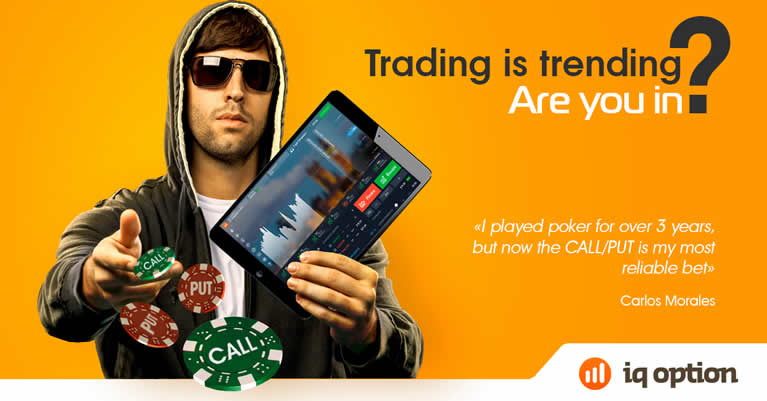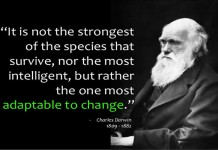A mere decade ago if you were interested in becoming an online trader you’d be hard-pressed to find a platform that met your requirements. Today you are literally spoilt for choice. So much so that selecting just among the plethora of competing Forex firms out there can be quite a daunting prospect, let alone considering all the alternatives to Forex trading. Today there are a number of other online trading platforms that are starting to gain traction and eat away at Forex’s formidable market share. One of the top candidates for the place currently occupied by online Forex are binary options. Binary options are relative newcomers to the world of online trading. Most platforms started making their way to the web after 2008 when their over-the-counter progenitors were listed by the Chicago Board of Trade (CBOT). Some of the most common questions we get asked are: What are the differences between Forex and Binary Options? Are they the same thing? Is one more suitable for beginners than the other? Which one is more profitable? To this end we have created this article so that all these queries can be addressed in one place.
Before getting to the comparison it’s important to set the record straight on a particular issue. When Forex trading is compared to other kinds of online trading its share of the market is wildly exaggerated. The figure that is normally thrown around is 3.98 trillion dollars traded daily. The foreign exchange market is certainly the largest and most liquid capital market in the world, but online Forex accounts for a relatively slim slice of this larger pie. Of the 4 trillion dollars changing hands every day on the world’s currency markets about $2.5 trillion is traded as forwards, swaps and other miscellaneous derivatives, $1.5 trillion is traded on the spot markets, and of this $1.5 trillion only 10% (or $150 billion) is accounted for by retail trades made via online platforms. Of course that is not to say that online Forex isn’t huge, it definitely is, just not as huge as is often made out.
In other words binary options have a long way to go if they want to compete, but not quite as long as many people may think. Binary options are definitely the new kid on the block, they currently account for a fraction of all online trades, however the industry is growing beyond all forecasts and with Forex’s market share being considerably smaller than most take for granted, it may not be long before binary options manage to stage a coup. Why is this?
There are some pronounced differences between Forex and binary options that prospective traders should be aware of. These differences are, in part, responsible for the rapid growth of binary options. A few basic points to keep in mind before we go into further detail are as follows: Forex trading, as the name suggests, is limited to currency pairs whereas binary trades can be placed on all four tradeable asset classes (currencies, commodities, stocks and indices). While probably not a tremendous advantage to novices, who normally begin binary trading with currency pairs anyway, binary options are nevertheless much more intriguing once a trader starts to become proficient. Especially when you factor in co-relations across asset classes, such as investing in gold as the U.S dollar begins to drop, or in oil when the dollar is strong. Essentially binary options provide traders with the ability to take full advantage of fundamental analysis as all four asset classes are available under one platform.
What does work significantly in the favour of beginners is the simplicity of binary options. Traders only need to forecast an underlying asset’s direction of movement from the price they got in at, not the magnitude of the change. Simply put, either up (Call) or down (Put). This makes for a much smoother learning process as the parameters are so easy to get to grips with. The same goes for calculating payouts and managing risk because with binary options the payouts are fixed.
Forex payouts, in contrast, are extremely unpredictable. This is due to the outcomes of Forex trades being so dependant on the magnitude of a currency pair’s movement up or down. While this means that great gains can potentially be made on a single trade with relatively little capital, it also means that losses far outweighing the value of the initial stake can also occur, especially in cases where leverage is used (borrowing several times more than you are able to invest in order to make a larger investment). In reality currency pairs rarely surge to a point were a single position can make significant returns for investors.
With binary options gains may seem more conservative at first glance, a winning trade pays out just as much if it is a single pip in-the-money as it does if the same trade is in-the-money by 1000 pips. The payouts on any winning trade will tend to range between 65 and 91% (ordinarily somewhere around the 70% mark), so if a trader is not relying on being paid per pip then more needs to be invested in order to make those larger returns. But when you factor in the pre-calculated risk of a binary trade (i.e. you only stand to lose what you initially invested and nothing more), and the fact that you do not need your asset to rise out of the bid/ask spread as in Forex (this and offering leverage is how Forex brokers make their money), it becomes clear that over time the benefits of riskier Forex trades are probably outweighed by binary options.
Another difference between these two types of trading is that while Forex brokerages only offer trades on currency pairs their systems are much more complicated and in many ways more prohibitive to your average online trader without any market experience. Forex traders have to keep track of their levels of exposure, implement robust stop loss strategies and stick to them, monitor interest rates, learn how leverage works and apply it intelligently. In contrast binary options keep things as simple as Call or Put on the users end, no spreads, no leverage, no hidden fees, and encourage their traders to immerse themselves in the complexity of the markets themselves. Forex traders have a pretty steep learning curve to navigate before they even begin to think about market analysis, economic indicators and risk management strategies.
Also, those who feel that trading online Forex is somehow closer to “real life” trading are quite mistaken. It is one of the most common misconceptions in Forex trading. Online Forex is a spot market, meaning that it is pretty similar to the futures market. So when trading Forex online you are not actually purchasing currencies or conducting any kind of real exchange. Essentially you are agreeing to conduct a transaction on a given currency pair in the future. In online Forex this typically means a couple of days after locking-in the trade. But you never actually get the opportunity to make this exchange because at the close of each trading day the future you have purchased is offset by another day. This means that when you are leveraging a position you are not in fact borrowing the extra capital from your broker as you would have to when leveraging stock investments (the capital actually has to be paid somewhere in stock leverages), rather you are making an agreement with your broker regarding a future outcome. The way Forex brokers manage their spreads (the price you get in at versus the price you can sell at) is to ensure that they have an advantage over the trader. Similarly their required margin (the percentage of the leveraged amount you must have in your trading account in order to qualify for the ratio of leverage you require) though a safeguard against the currency you have purchased dropping in value, is also another opportunity for them to eat into your real capital without actually having to loan you a penny. You’d be surprised just how many Forex traders get this wrong.
Binary options are derivative instruments in the same way online Forex trades are, the marked difference being that with binary options there is a level of transparency derived from the simplicity of the product that is currently unparalleled in online trading. You choose your asset, you select the duration of your trade, decide how much of your risk capital you would like to invest in the position, Call or Put, and that’s it. All you have to do after locking in a trade is wait for the outcome and either make back between 65-91% over and above your stake, or lose the majority of it. There is not much of a margin for miscommunication with parameters as clear and simple as these, this is what is attracting so many new traders to binary options.
Finally the one great advantage that Forex brokers previously had over binary options firms is now close to dissapearing. This advantage was regulation. Up until recently binary options were traded in a completely unregulated environment, which made Forex seem somehow more legitimate and secure. This is fast changing, Banc De Binary was recently awarded the first regulatory license to trade binary options, this landmark ruling has now officially recognised binary options as legitimate financial instruments, and with dozens of other brokers having already applied for licencing it won’t be long before the binary options industry is completely regulated.













